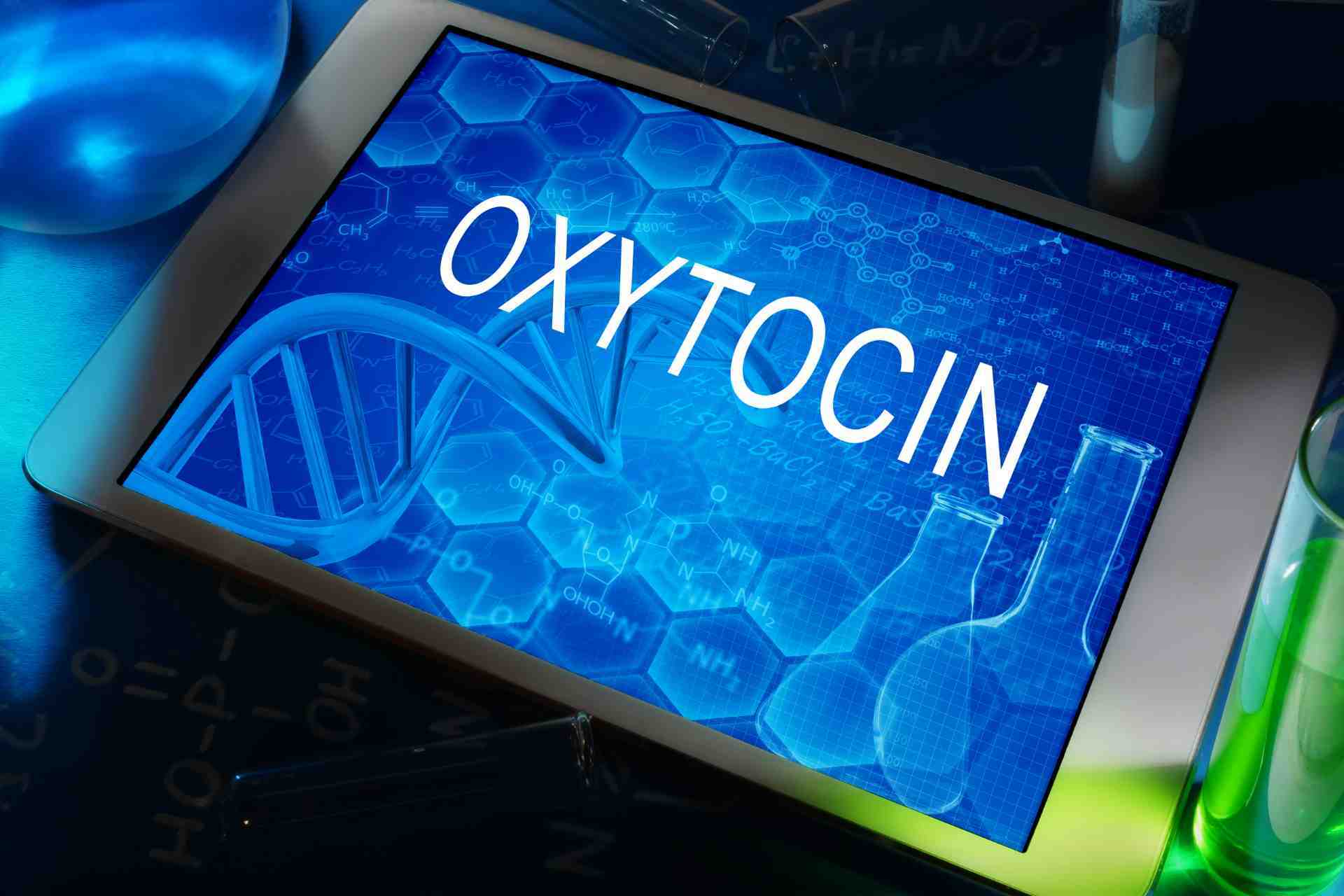Oxytocin – The “love or cuddle hormone.
Introduction to Oxytocin Hormone

People commonly refer to Oxytocin as the “love or cuddle hormone.” It is one of the two major hormones that the posterior lobe of the pituitary gland secretes. Mostly, nerves with cell bodies in the hypothalamic part of the brain make up the posterior pituitary. These nerves release their hormones directly from their endings into blood vessels, which then enter the circulation.
Oxytocin’s Biochemical Structure and Synthesis
Oxytocin Hormone is a relatively small peptide hormone composed of only 9 amino acids. Nerve cells in the hypothalamus synthesize it in the form of a larger precursor molecule. This molecule then travels down the nerve fibers through the pituitary stalk to the posterior lobe. During this process, the active hormone cleaves from the precursor. Specific, high-affinity oxytocin receptors mediate the actions of oxytocin. Oxytocin has a well-recognized role in breastfeeding and uterine contraction.
Oxytocin Hormone in Sexual Medicine
In sexual medicine, oxytocin has appeared to play a significant role in orgasm. Several studies have found increases in plasma oxytocin at orgasm. Researchers have found that plasma oxytocin levels rise significantly around orgasm and remain higher than baseline when measured 5 minutes after arousal. Oxytocin’s effects on muscle contractibility may facilitate male sperm and female egg transport.
Role in Sexual Arousal and Bonding
Oxytocin levels in women before and after sexual stimulation suggests that oxytocin is important in sexual arousal. One study showed that genital tract stimulation increased oxytocin immediately after orgasm. Another study reported increases in oxytocin during sexual arousal in response to nipple/areola, genital, and/or genital tract stimulation. A study of men found an increase in plasma oxytocin immediately after orgasm. Oxytocin promotes contentment, reduces anxiety, and fosters feelings of calmness and security around a mate. To reach full orgasm, one must deactivate brain regions associated with behavioral control, fear, and anxiety during sexual arousal. Many studies have shown a correlation of oxytocin with social bonding, trust increases, and fear decreases.
Oxytocin, Anxiety, and Romantic Attachments
One study confirmed a positive correlation between oxytocin plasma levels and an anxiety scale measuring adult romantic attachment. This suggests that oxytocin might play a crucial role in inhibiting brain regions associated with behavioral control, fear, and anxiety, thereby facilitating orgasm.
Aging, Hormones, and Female Sexual Dysfunction
As with most of our beneficial hormones, the human body produces less and less oxytocin as we age.In addition, medical professionals often leave female sexual dysfunction untreated because it doesn’t show obvious symptoms like the inability to produce an erection. Aging women may feel a lack of intimacy with a partner or find it increasingly difficult to climax. In many cases this is not a product of a “stale” relationship, but more a result of a treatable hormone imbalance. This condition will be exacerbated with the onset of menopause.
CORE Institute’s Pioneering Efforts
CORE Institute is one of a very limited number of medical clinics in the United States to introduce Oxytocin as a part of our bio-identical hormone therapies. Oxytocin is immensely popular in Europe in treating female sexual dysfunction but inexplicably has escaped the imaginations of American physicians. Thus, CORE Institute is on the front-lines of implementing oxytocin therapy as a viable option for aging women suffering from anedonia (low libido) and difficulty achieving orgasm.
Conclusion and Further Study
In our practice, oxytocin has played an integral role in the comprehensive approach to women who have presented with the common symptoms of anorgasmia and anhedonia. Additionally, From practical experience and in our noncontrolled study, we have found that approximately 87% of our patients that were prescribed oxytocin have found a significant improvement in the intensity of orgasm. 92% of patients prescribed reported an increase in the sense of calmness and reduction of anxiety as soon as 15 minutes after application. Multiple methods of application exist and can tailor them to the individual. While oxytocin’s role in intimacy and sexuality is clear, researchers need to conduct more studies to understand how to apply it consistently to improve specific symptoms.
Contact Information
For more information about Oxytoxin, please visit our website at Core Medical Group.

